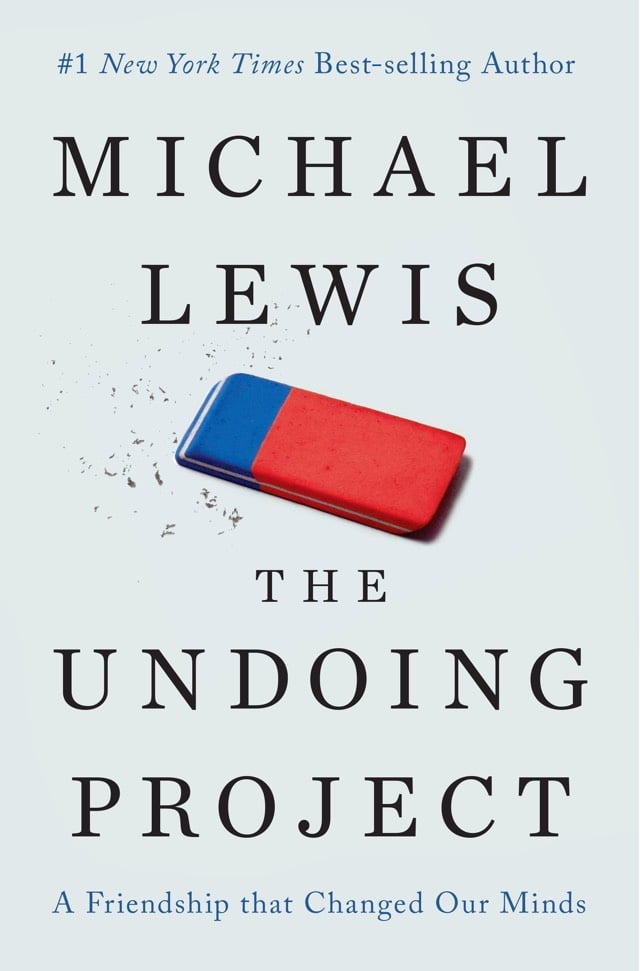Maybe there’s more that brings us together than you think
This lovely video from a television station in Denmark highlights the similarities we all share across seemingly impassable social, economic, racial, and religious boundaries.
It’s easy to put people in boxes. There’s us and there’s them. The high-earners and those just getting by. Those we trust and those we try to avoid. There’s the new Danes and those who’ve always been here. The people from the countryside and those who’ve never seen a cow. The religious and the self-confident. There are those we share something with and those we don’t share anything with.
And then suddenly, there’s us. We who believe in life after death, we who’ve seen UFOs, and all of us who love to dance. We who’ve been bullied and we who’ve bullied others.
Last week I started reading The Undoing Project, Michael Lewis’s book about the friendship and collaboration of psychologists Daniel Kahneman and Amos Tversky. This passage on Tversky’s work seems relevant to this video.
From Amos’s theory about the way people made judgments of similarity spilled all sorts of interesting insights. If the mind, when it compares two things, essentially counts up the features it notices in each of them, it might also judge those things to be at once more similar and more dissimilar to each other than some other pair of things. They might have both a lot in common and a lot not in common. Love and hate, and funny and sad, and serious and silly: Suddenly they could be seen — as they feel — as having more fluid relationships to each other. They weren’t simply opposites on a fixed mental continuum; they could be thought of as similar in some of their features and different in others. Amos’s theory also offered a fresh view into what might be happening when people violated transitivity and thus made seemingly irrational choices.
When people picked coffee over tea, and tea over hot chocolate, and then turned around and picked hot chocolate over coffee — they weren’t comparing two drinks in some holistic manner. Hot drinks didn’t exist as points on some mental map at fixed distances from some ideal. They were collections of features. Those features might become more or less noticeable; their prominence in the mind depended on the context in which they were perceived. And the choice created its own context: Different features might assume greater prominence in the mind when the coffee was being compared to tea (caffeine) than when it was being compared to hot chocolate (sugar). And what was true of drinks might also be true of people, and ideas, and emotions.
The idea was interesting: When people make decisions, they are also making judgments about similarity, between some object in the real world and what they ideally want. They make these judgments by, in effect, counting up the features they notice. And as the noticeability of features can be manipulated by the way they are highlighted, the sense of how similar two things are might also be manipulated. For instance, if you wanted two people to think of themselves as more similar to each other than they otherwise might, you might put them in a context that stressed the features they shared. Two American college students in the United States might look at each other and see a total stranger; the same two college students on their junior year abroad in Togo might find that they are surprisingly similar: They’re both Americans!
By changing the context in which two things are compared, you submerge certain features and force others to the surface. “It is generally assumed that classifications are determined by similarities among the objects,” wrote Amos, before offering up an opposing view: that “the similarity of objects is modified by the manner in which they are classified. Thus, similarity has two faces: causal and derivative. It serves as a basis for the classification of objects, but is also influenced by the adopted classification.” A banana and an apple seem more similar than they otherwise would because we’ve agreed to call them both fruit. Things are grouped together for a reason, but, once they are grouped, their grouping causes them to seem more like each other than they otherwise would. That is, the mere act of classification reinforces stereotypes. If you want to weaken some stereotype, eliminate the classification.
That’s what this video did so effectively…it switched up the contexts. Rabid soccer fans became dancers, bullies became lonely people, people of different faiths were united by their believe in an afterlife. An exercise for investors and entrepreneurs building media companies and social networks (as well as people running small independent sites….I’m staring hard at myself in the mirror here): how can you build tools and platforms that give people more ways to connect to each other, to switch up the contexts in which people are able to group themselves?






Stay Connected